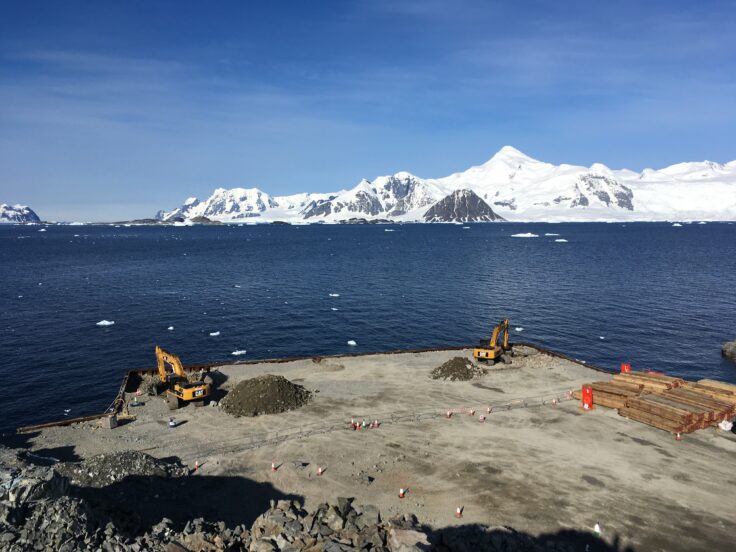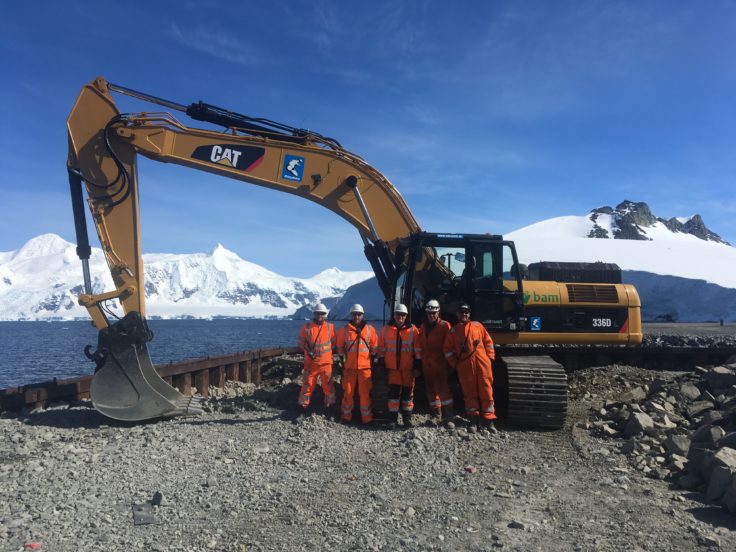Digging begins in construction of new Antarctic wharf
Modernisation work to transform how Antarctic science is delivered has begun at Rothera Research Station, with excavation work starting on the deconstruction of the old wharf.
A new 74-metre long wharf, bigger, deeper and stronger than the current one, will be built during the next two Antarctic seasons. It is due for completion in April 2020, and will provide safe berthing and efficient operations for the new polar research vessel the RRS Sir David Attenborough.

Whilst preparations for building a new wharf have been underway for two years, the first “spade in the ground” moment occurred this weekend when two 35t excavators operated by construction partner BAM Nuttall broke through the surface of the old ‘Biscoe’ wharf and began the process of deconstruction, which has to take place before the new wharf can be built. The excavators will soon be swapped for two 90t long reach machines for the deep excavation and dismantling works.
BAS engineer and project manager David Seaton said: “Construction work in Antarctica is like nothing else, and it has taken a vast amount of planning, practicing and preparation to get us this far. The next few weeks will be critical to the success of the project and we hope to make good progress whilst we have long hours of daylight and relatively favourable weather conditions, knowing that in a few months when winter approaches things are likely to get a lot more difficult.”
BAM project manager Martha McGowan said: “All the team are really pleased to have begun this exciting and important work. It is great to think that the wharf we are building will berth the world’s most famous research ship – the RRS Sir David Attenborough!”
Because of the practical restrictions of working in one of the most remote construction sites in the world, the construction team practiced full-scale assembly of the 30 tonne steel rigs that will form the skeleton of the new wharf in Southampton before deployment, in order to identify unexpected challenges or additional pieces of equipment needed whilst still in the UK, rather than once everything had been shipped 11,000km to Rothera.
The cargo ship DS Wisconsin, loaded with 4,500 tonnes of steel and equipment for the build, arrived at Rothera on 28th December. Teams worked around the clock to unload her, which took a full 11 days and nights.
